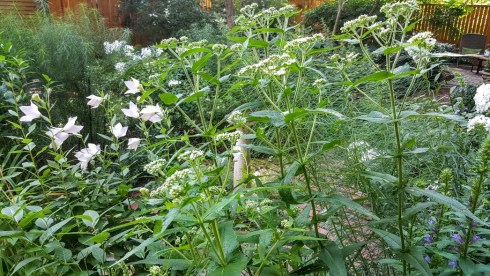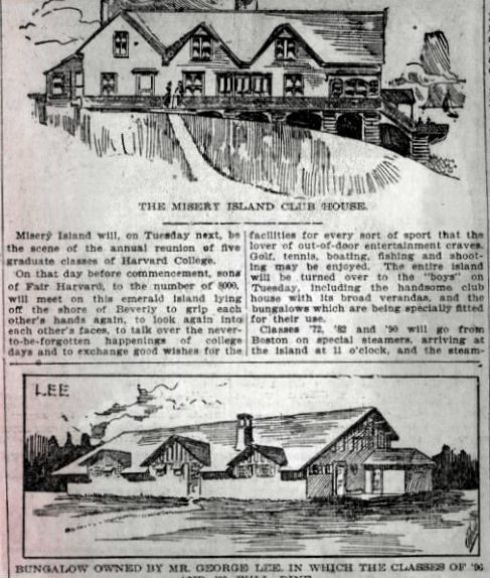There is no question that the women I’ve come to admire the most as I’ve been compiling my #SalemSuffrageSaturday stories are the entrepreneurs: the artists and writers and activists are both interesting and impressive of course, but women entrepreneurs leave less of a mark, and were much more daring in their day. It was fine for women in the eighteenth and nineteenth centuries to “dabble” in painting and writing, but business was another thing altogether: no dabbling there. And no one is interested in them, so their stories remain untold. We have to hear about (very worthy, but still!) House of the Seven Gables founder and philanthropist Caroline Emmerton Caroline Emmerton Caroline Emmerton Caroline Emmerton Caroline Emmerton Caroline Emmerton Caroline Emmerton Caroline Emmerton Caroline Emmerton Caroline Emmerton Caroline Emmerton again and again and again and again and again, but I’m telling you now: her contemporary Charlotte Fairfield was far more interesting.
So who was Charlotte Fairfield (1864-1924)? Well, I have labeled her “Salem’s Coal Queen” and the Boston papers refer to her as both a “Model Business Woman” and “Salem’s Smartest Business Woman”, among other glowing terms. She was the daughter of James Fairfield of Salem, a dealer in coal and other commodities, but she did not simply inherit the family business: she pursued her own bookkeeping career in Boston, principally with the dry goods firm Babcock & Sargent, until the combined forces of her own illness and her brother’s death compelled her to come back to Salem and work with her father. In 1903, when she was denied a vote in the Salem Coal Club, she and her father decided to go “independent” and undercut their competition, lowering the price of coal in Salem and exposing what was essentially a cartel in the process to great acclaim and notoriety: the newspapers simply could not write enough about Miss Fairfield in the winter of 1903: she became the “Fighting Coal Dealer”.


“Lottie” Fairfield transcended her gender with that particular headline in the Boston Sunday Globe, but the story beneath it, and most stories about her in 1903 and later, are overwhelmingly focused on it: Thoroughly independent, with a mind, a will, and a brain all her own and a masculine adaptability for business, Miss Fairchild is decidedly feminine, not at all what you would call a strong-minded ‘new’ woman, but an up-to-date, stylish, well-gowned, attractive, bright, lovable little body, who, with the proverbial inconsistency of her sex, with coal by the wagonloads on her wharves, has burned coke for a couple of years in her furnace reads the February 15 illustrated story in the Globe. Wow! That is quite a characterization. The Boston Post caricatured her “arrogant” competitors in the Salem Coal Club, most prominently Major George W. Pickering, while headlining her as a heroine.

 Boston Post 13 February 1903
Boston Post 13 February 1903
And so she was: because the result of Miss Fairfield’s war with the Salem Coal Club was the lowering of the price of coal from $12.00 to $9 a ton in Salem: imagine the impact that had in an era when coal was a major household expense! Charlotte Fairfield appears in the Boston papers again and again over the next twenty years, always portrayed as plucky, business-savvy, and well-dressed. After years of pleading with the city of Salem to dredge the Harbor so that coal-laden ships could reach her docks, she took matters into her own hands and then submitted the dredging bill to the City, which refused to reimburse her. One of her docks was damaged because of the inaccessibility of the Harbor. She filed suit against the City for both reimbursement and damages, and eventually won both, though the legal process stretched out for years, earning her more headlines in the local papers. She was a fierce advocate for Salem Harbor, and not just for commercial reasons: at this time the City was dumping raw sewage into it and she and others protested regularly to state and federal authorities. She was very involved in the relief efforts following the Great Salem Fire in 1914 (which did not burn down her waterfront storehouse, as it was built of “modern” materials) and she gave a job to every Salem soldier returning home from World War I.


I became so enamored of Charlotte Fairfield that I actually gasped when I found accounts of her death in the papers: a tragic end to a very full and active life, from injuries sustained when her clothing caught fire while she was standing too close to a gas heater in her home at 13 Pleasant Street (there is actually quite a list of Salem women who died when their clothes caught on fire!!!) She was able to call for help, and was in stable condition for the first few days in Salem Hospital, but she died on January 30, 1924, leaving only a niece, and a substantial estate, of course.



![Events Salem_Observer_1852-01-03_[1]](https://i0.wp.com/streetsofsalem.com/wp-content/uploads/2019/01/Events-Salem_Observer_1852-01-03_1.jpg?resize=490%2C337&ssl=1)
![Events of 1851 Salem_Observer_1852-01-03_[1] (1) 2](https://i0.wp.com/streetsofsalem.com/wp-content/uploads/2019/01/Events-of-1851-Salem_Observer_1852-01-03_1-1-2.jpg?resize=490%2C384&ssl=1)
![Events of 1851 Salem_Observer_1852-01-03_[1] (2) 3](https://i0.wp.com/streetsofsalem.com/wp-content/uploads/2019/01/Events-of-1851-Salem_Observer_1852-01-03_1-2-3.jpg?resize=490%2C495&ssl=1)
![Events of 1851 Salem_Observer_1852-01-03_[1] (3) 4](https://i0.wp.com/streetsofsalem.com/wp-content/uploads/2019/01/Events-of-1851-Salem_Observer_1852-01-03_1-3-4.jpg?resize=490%2C482&ssl=1)
![Events of 1851 Salem_Observer_1852-01-03_[1] (3) 5](https://i0.wp.com/streetsofsalem.com/wp-content/uploads/2019/01/Events-of-1851-Salem_Observer_1852-01-03_1-3-5.jpg?resize=490%2C480&ssl=1)







 Chestnut and Essex Streets above; below, a panorama of Derby Wharf at high tide which was passed around by a bunch of architects yesterday, but I think can be attributed to ©Kirt Rieder. Beautiful but scary!
Chestnut and Essex Streets above; below, a panorama of Derby Wharf at high tide which was passed around by a bunch of architects yesterday, but I think can be attributed to ©Kirt Rieder. Beautiful but scary!



























 Newspaper reports of the 1902 Harvard reunions (Boston Post, June 22-25, 1902 ) and 1926 fire (Boston Daily Globe, May 8-10, 1926); Great Misery today, and home in Salem Harbor on a glorious early evening!
Newspaper reports of the 1902 Harvard reunions (Boston Post, June 22-25, 1902 ) and 1926 fire (Boston Daily Globe, May 8-10, 1926); Great Misery today, and home in Salem Harbor on a glorious early evening! “Pennsylvania Pier” by Frank Cousins, from his “Salem in 1876” series, which was published in the early 1890s.
“Pennsylvania Pier” by Frank Cousins, from his “Salem in 1876” series, which was published in the early 1890s.
 “Collins Cove” is written on the back.
“Collins Cove” is written on the back.

 “Salem Harbor from Naugus Head”.
“Salem Harbor from Naugus Head”.

 This last view is the most rare and mysterious: no date, no photographer, no publisher. I think it is from the end of the Willows looking back towards Salem on the Beverly Harbor side but am not sure—any other ideas?
This last view is the most rare and mysterious: no date, no photographer, no publisher. I think it is from the end of the Willows looking back towards Salem on the Beverly Harbor side but am not sure—any other ideas?







































































